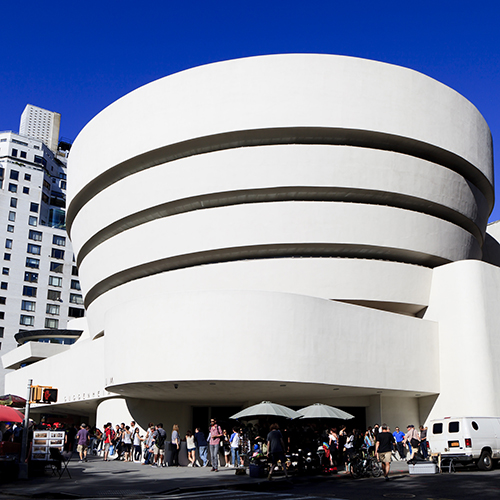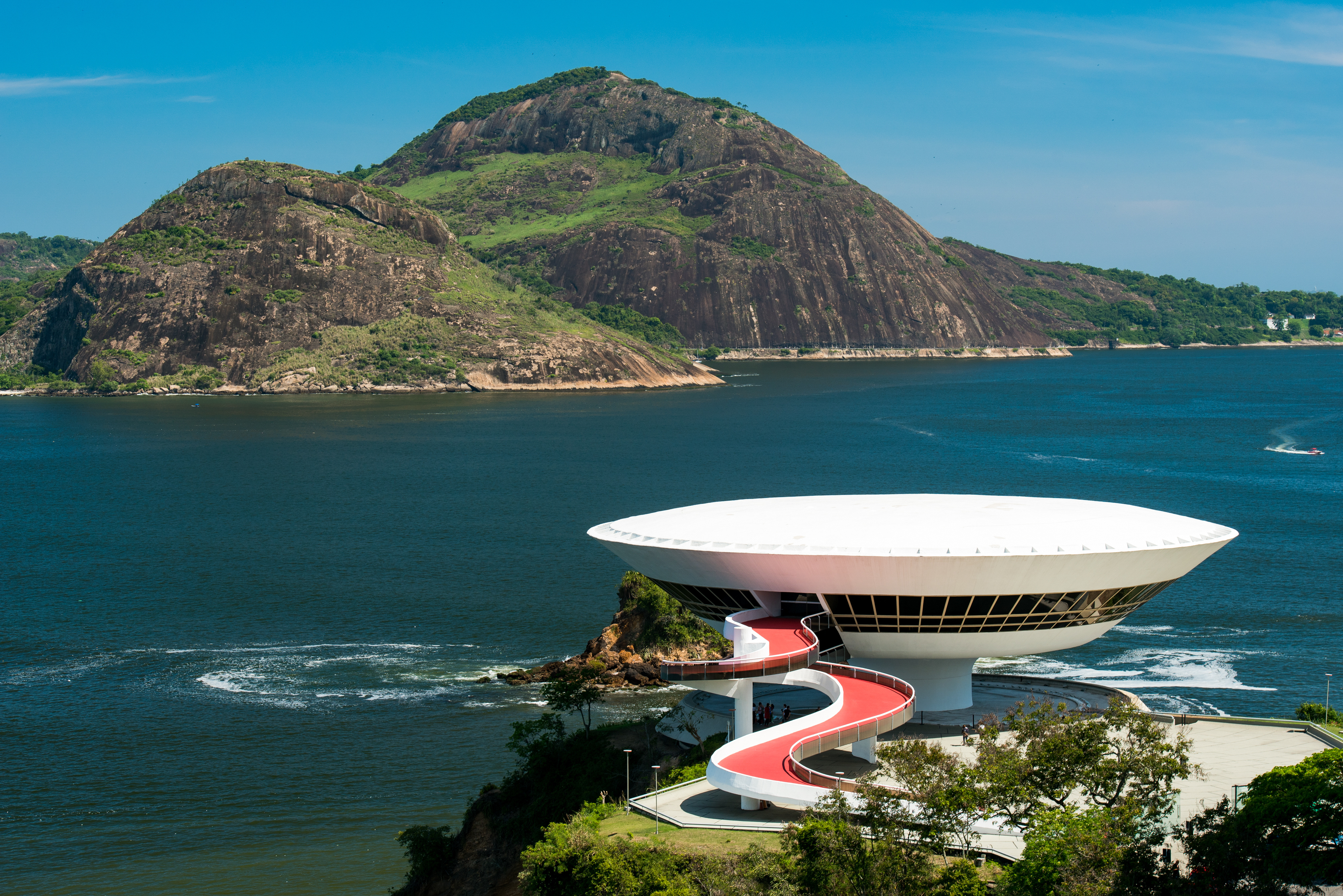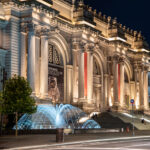One of my most favorite things about exploring a new city or region is noting the beautiful architecture I see while I’m on my journey. There’s classic architecture, which definitely stands the test of time (literally and figuratively!), and then there are the newer buildings and structures, brainchildren of noted and influential schools of design. From yesterday to today, 12 architectural legends in particular have shaped how you view the world’s most stunning structures. Let me introduce you to them.

Andrea Palladio (1508-1580) is considered one of the most influential architects in history, though his most inspired works were not begun until he was well into his thirties. At that time, Palladio had meticulously studied the ancient Roman architecture of Vitruvius, which would shape his architectural style heavily. He was famed for using Greco-Roman design elements, such as Doric columns, in his most famous villas, such as the Villa Capra La Rotonda near Vicenza (pictured); the Basilica Palladiana in Vicenza’s city center; Villa Barbaro in Maser; and Villa Cornaro northwest of Venice. He is also well-known for building the Churches of San Giorgio Maggiore and Il Redentore in Venice, unsurprising considering he applied to be the Papal architect! To see all the beautiful architecture Palladio has given to northern Italy, visit our Vicenza and Venice pages and book one of our lovely vacation packages.
Sir Christopher Wren (1632-1723) was a jack-of-all-trades, as he was not just an architect but also a mathematician, physicist, and astronomer, just to name a few! He excelled at science and mathematics at Oxford, and would later help establish the UK’s national science academy, the Royal Society. His earliest works were close to home and his heart, such as Cambridge’s Pembroke College Chapel and Oxford’s Sheldonian Theatre. His best-known architectural works, however, are the Wren Library at Trinity College, Cambridge; the Royal Observatory at Greenwich; and St. Paul’s Cathedral in London (pictured). He rebuilt the cathedral after the Great Fire of 1666, making it a landmark in the process, but he was very self-critical as he did not perfect the dome like he wanted. Wren’s masterpieces are iconic and should be explored on your next Oxford, Cambridge, and London vacations with Tripmasters!


Gustave Eiffel (1832-1923) was not an architect by trade; if given the choice, he would have called himself a civil engineer. That’s why the structure that is most associated with him is not a building per se, but a 1,063-foot tower that has become a vivid picture in every traveler’s fantasy since 1889 when it was built. Of course I’m referring to the majestic Eiffel Tower on Paris‘s Champ de Mars (pictured). As a civil engineer, metalworks factored into many of his recognizable works, such as the Church of San Marcos in Arica, Chile; Budapest Nyugati railway station; the Maria Pia Bridge in Porto, Portugal; Estación Central in Santiago, Chile; and the Mercado Adolpho Lisboa in Manaus, Brazil. (Eiffel even designed the metal framework for New York‘s Statue of Liberty!) Eiffel’s works are all over the world so you can’t go wrong with a Tripmasters vacation combining any of these cities.

(Venice, Palladio)

(London, Wren)

(Budapest, Eiffel)

(Barcelona, Gaudí)
Antoni Gaudí (1852-1926) was one of the fathers of Catalan Modernism (Modernisme) as an architectural style. In a quest to find “the Catalan identity”, buildings were designed by architects with local handiwork in mind, ranging from carpentry to ironworks to ceramics and tiles. The Catalan style is very decorative, and that’s most evident when looking at Gaudí’s best-known work, the Basilica de la Sagrada Família in Barcelona (pictured). It is a tribute to the evolution of the Catalan identity as the basilica, which incorporates Gothic styles with Modernisme, is still being built and improved upon. Groundbreaking was in 1886, but the massive basilica isn’t slated for completion until nearly 2030. (Remember, Gaudí died in 1926!) You can read more about Gaudí’s impact on architecture in Barcelona by clicking here, reading about our must-see attractions, falling in love, and then booking your Catalan getaway.


Frank Lloyd Wright (1867-1959) is perhaps the most influential architect to come from the USA. Born in Wisconsin, many of his most impressive works are in the Midwest, such as Taliesin, west of Madison, Wisconsin, and the Dana-Thomas House in Springfield, Illinois. These typify the Prairie School of architecture that made him famous. Wright also designed building materials such as the “textile” system of concrete block construction, seen in such buildings as the Arizona Biltmore Hotel in Phoenix and the Ennis and Freeman Houses in Los Angeles. His later works, such as Fallingwater south of Pittsburgh, and the Solomon J. Guggenheim Museum in New York City (pictured), took advantage of the limits of geometric asymmetry. (Did you know Wright also designed 13 buildings in Lakeland, Florida, near Tampa?) Explore the USA with Tripmasters and build your own Wright-cation!
Ludwig Mies van der Rohe (1886-1969) was noted for his brand of Modernism which sought to carve itself out as its own distinct architectural era. These revolutionary ideas were ones he had back when he led the Bauhaus School in Dessau, north of Leipzig. Disheartened by the Nazis’ insistence that his architecture was “not German enough”, he emigrated to the USA and settled in residence at the Illinois Institute of Technology, where he designed 22 buildings. Chicago would be his home for over 30 years, and many of his best-known works are here, such as IBM Plaza, 860-880 Lake Shore Drive, and the Seagram Building. He is also noted for his development of Lafayette Park in Detroit; the Martin Luther King, Jr. Memorial Library in Washington, D.C.; the Bacardi Office Building in Mexico City; and the Neue Nationalgalerie in Berlin (pictured), the only building he designed for Germany after moving into exile in 1937.


(Springfield IL, Wright)

(Mies van der Rohe)

(Tokyo, Le Corbusier)

(Brasília, Niemeyer)

Le Corbusier (1887-1965) was more than an architect, he was also an urban planner, on an even wider scale than the thoughts and writings of Frank Lloyd Wright and Ludwig Mies van der Rohe. Indian Prime Minister Nehru asked Le Corbusier (the professional name of Charles-Édouard Jeanneret, meaning “the crowish one”) to plan the layout and construction of Chandigarh, a city four hours north of Delhi, as “the city of the future”. Indeed, Le Corbusier was the first of these architects to build with a global audience in mind, and his smooth construction with sharp edges and inlaid windows was copied worldwide. 17 of his buildings are listed as UNESCO sites, including the Villa Savoye in Poissy, near Paris (pictured); Immeuble Clarté in Geneva; La Cité Radieuse in Marseille; the National Museum of Western Art in Tokyo; and the Curutchet House in La Plata, Argentina, near Buenos Aires.
Oscar Niemeyer (1907-2012) was a protégé of Le Corbusier’s, and one can tell that their styles are similar, but that didn’t stop him from charting his own path as an architectural legend. He popularized the use of reinforced concrete in his structures, which was first seen in his design of the Church of St. Francis of Assisi in Belo Horizonte. Belo Horizonte’s mayor at the time, Juscelino Kubitschek, was such a fan of Niemeyer’s work that he would later (as President of Brazil) ask him to design the buildings and layout of Brasília, Brazil’s new capital city, entirely from scratch. Completed in 1960, Brasília is Niemeyer’s showcase. Other iconic works include the Niemeyer Auditorium in Ravello, Italy, and Niterói Contemporary Art Museum in Rio de Janeiro (pictured). Take a Tripmasters vacation to Brazil and further afield to see Niemeyer’s innovative oeuvre.


Eero Saarinen (1910-1961) came from a family of architects, so it was no surprise that he would follow in his father’s footsteps. (Eilel Saarinen designed the National Museum of Finland and the central railway station in Helsinki.) Even though Saarinen only lived to the age of 51, the structures he built revolutionized architecture, as he had a keen eye for detail while the soft curves in his works made them more accessible to those viewing them. He designed the Gateway Arch in St. Louis, which was his best-known work and was completed posthumously in 1965. He also built Dulles International Airport outside Washington, D.C.; the TWA Flight Center at JFK Airport in New York City (pictured; the interior seating once consisted of tulip chairs — another Saarinen innovation); and Kleinhans Music Hall in Buffalo. See the USA through the eyes of Eero Saarinen by booking your Tripmasters vacation today.

(St. Louis, Saarinen)

(Hong Kong, Pei)

(Hadid)

(Calatrava)
I.M. Pei (1917-2019) was for many years the preeminent architect in the world, and his death in May 2019 at the age of 102 was a blow to the design world. Born in southern China, Pei emigrated to the USA when he was 18, and he called New York City home for seven decades. Pei would be best-known for his overarching vision seen in all of his works, which involved geometric shapes and, in some, shades of cubist art and architectural styles. His most iconic pieces are the steel pyramids installed in front of Paris‘s Musée du Louvre (pictured), which were very controversial when first built. Other iconic works by Pei include the Mesa Laboratory in Boulder, Colorado; the Bank of China Tower in Hong Kong; the hunting lodge Fragrant Hills in Beijing; L’Enfant Plaza in Washington, D.C.; the Rock and Roll Hall of Fame in Cleveland; the Museum of Islamic Art in Doha, Qatar; and the Macau Science Center.


Zaha Hadid (1950-2016) was determined to smash through the glass ceiling in architecture, and that she did. In 2004, Hadid became the first woman to win the Pritzker Prize, architecture’s top honor. In her lifetime she managed to become the most famous female architect in the world, giving us Neo-Modernism with a uniquely fresh twist. Hadid became the first major architect to include painting as a key design element, as painting the structures she wished to conceptualize helped her in the design phase. Known as the “queen of the curve”, her best-known works all featured curves, such as the Bridge Pavilion in Zaragoza, Spain; the MAXXI Museum in Rome; the Guangzhou Opera House in China; and Dongdaemun Design Plaza in Seoul (pictured), which is one of the largest buildings in South Korea. From Europe to Asia, the best way to see Zaha Hadid’s works is to take a Tripmasters vacation!
Santiago Calatrava (b. 1951) is perhaps the most iconoclastic of the architects on this list, and that has earned him fans and also detractors. Like Hadid, Calatrava is also a painter who uses painting in his design, but his forte is sculpture, which helps him more with design concepts. Inspired by many of the great architects such as Eero Saarinen but also by sculptors such as Alexander Calder, Calatrava made a name for himself designing structures that are futuristic and in many cases look as if they defy gravity. His signature work is considered the City of Arts and Sciences (pictured: L’Hemisfèric) in his hometown of Valencia, Spain, which took 13 years to complete. He is also well-known for designing the Auditorio de Tenerife in the Canary Islands; the Milwaukee Art Museum; the World Trade Center PATH terminal in New York City; and the Turning Torso tower in Malmö, Sweden.

Which of these architectural wonders did you like the most? No matter which structure you like the most and how far away it is from you, you owe it to yourself to see all of them in person. Head over to Tripmasters.com and you can look at our exciting vacation destinations in over 120 countries and territories throughout the world.

